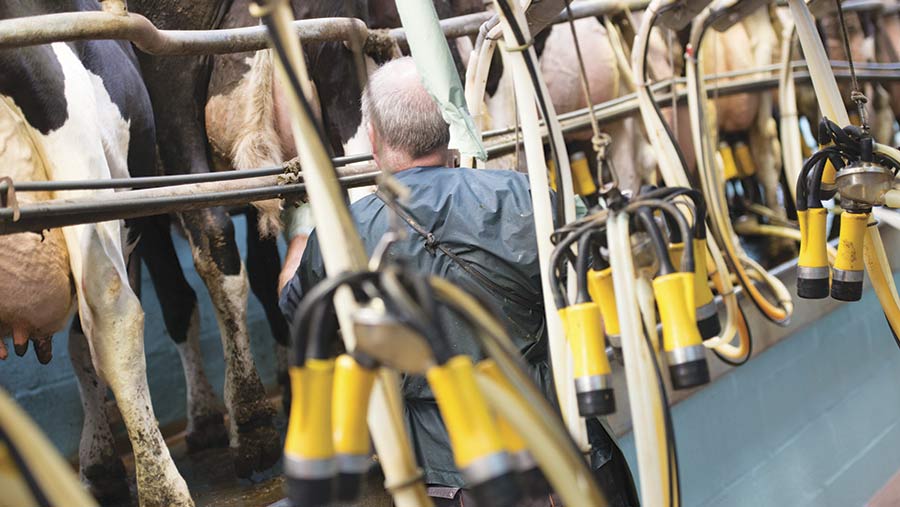4 tips to improve working conditions on your dairy unit
 © Philip Gibson
© Philip Gibson Dairy buildings must work for two important groups, the cows and the people who look after them.
However, the latter is often the forgotten part of the jigsaw on the farm.
Managing the labour on your farm can be one of the most challenging aspects of running a dairy business, but if you can get it right, the rewards are well worth the effort.
See also: Advice on staff management
Kite Consulting’s Edward Lott gives his tips on how to improve your farm buildings and the environment to build better team morale.
1. Improve the work environment
Providing the right working environment is important to allow staff to do their job properly and keep them motivated.
A well-kept, tidy farm that follows health and safety guidelines isn’t just important to your customer, but will also clearly convey to those who visit and work on the farm the standards you expect from them and what they can expect from you.
Do you have a break room, a shower and a toilet for staff members to use? Something as simple as rubber matting or heating in the pit can make a real difference to staff morale. Is the accommodation offered with the job fit for purpose? A mobile home might not be a suitable option for a family.
2. Retain staff by improving your management
In recent years, the expansion on many UK dairy units has been possible because of the employment of eastern European labour.
A recent survey, undertaken on behalf of Kite Consulting and the RABDF, which took place on 1,000 dairy farms, found nearly 30% of employed labour on UK farms was from overseas.
The uncertainty around Brexit means we are already seeing a scarcity of this type of labour. Therefore you might have to look to recruit from the UK labour market place.
With recruitment becoming harder, attracting the right people and retaining them will be increasingly important.
In our recent Brexit report we factored in an 8% rise in labour costs after Brexit to reflect the likely shortage of labour. But pay is not the only reason people accept jobs or stay in a position.
People management skills and work conditions both play a large part in helping to retain staff.
3. Consider how technology could reduce labour inputs
New technology can attract a new generation of workers to a farm business. But new technology can also help reduce your labour requirements altogether.
The use of systems for rumen, temperature or heat monitoring all reduce the need for labour, and automatic feed pushers and robotic parlours are increasingly being investigated by farmers as a way to reduce labour requirements.
Forecasted rises in labour costs need to be taken into account when making purchasing decisions. Once these have been taken into account, investing in technology could prove to be a financially viable way of controlling them.
4. Are you keeping up with the competition?
Lack of foreign labour and the inability to recruit UK labour is already having a big effect on some dairy businesses.
Look around at the conditions and standards other comparable employers in your area offer.
What do you need to do to your facilities to compete with other employers in your area and make your farm an attractive place to work?
